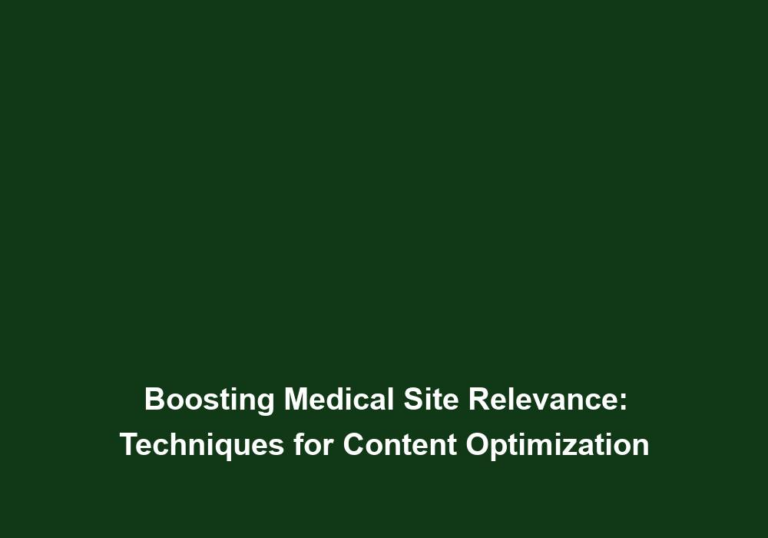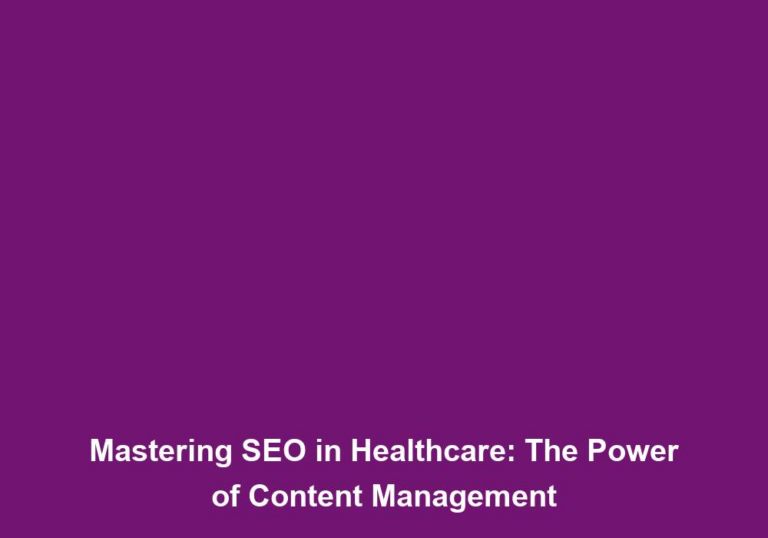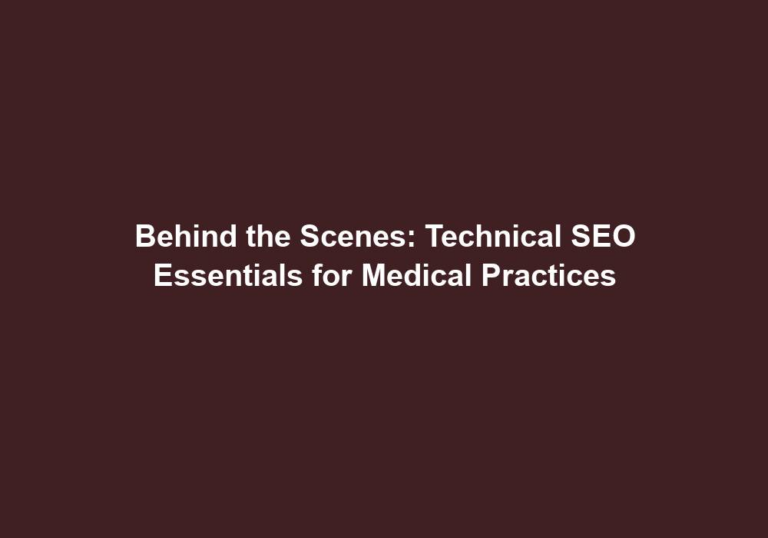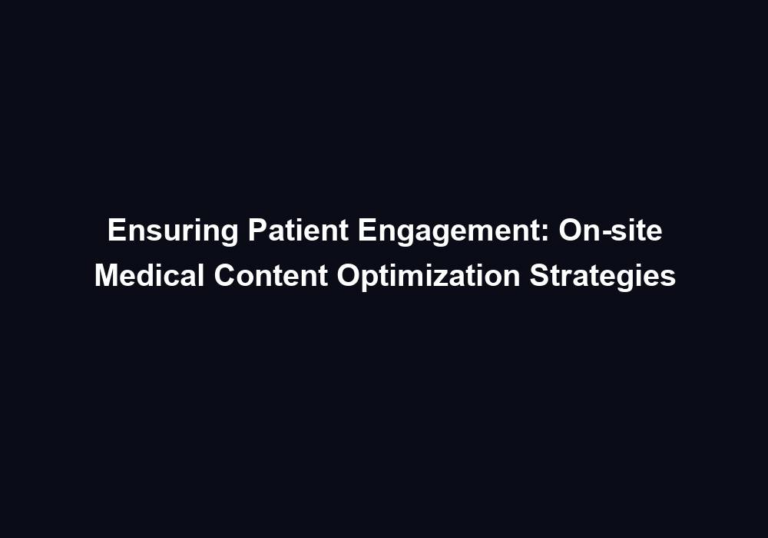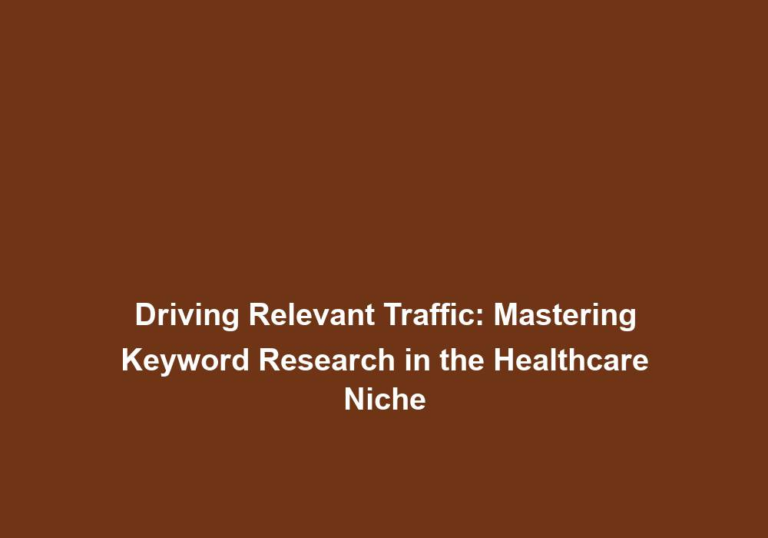Keeping Patients Informed: Best Practices for Healthcare Blog Management
In today’s digital era, healthcare organizations are increasingly relying on blogs to keep their patients informed and engaged. A well-managed healthcare blog can serve as a valuable resource, providing patients with relevant and accurate information, promoting health literacy, and fostering a strong patient-provider relationship. This article will explore the best practices for healthcare blog management, focusing on how to create compelling content, optimize for search engines, and foster patient engagement.
1. Understanding Your Audience
Before diving into content creation, it’s crucial to understand your target audience. By identifying the demographics, needs, and concerns of your patients, you can tailor your blog content to address their specific interests. Consider conducting surveys or analyzing patient feedback to gain insights into their preferences and topics they would like to read about.
Understanding your audience also involves recognizing their level of health literacy. Some patients may have a basic understanding of medical terms, while others may be completely new to healthcare concepts. Writing in a conversational tone, free from complex medical jargon, can make your blog more accessible to patients of all levels of health literacy. This will ensure that your content resonates with a wider audience and helps them better understand the information you are providing.
In addition to understanding your audience’s demographics and health literacy, it’s important to consider their unique needs and concerns. Are they primarily interested in preventive care, managing chronic diseases, mental health, or lifestyle tips? By addressing these specific interests, you can create content that is highly relevant and valuable to your readers. This can be done by conducting thorough research on the topics that resonate with your target audience and incorporating those topics into your content strategy.
2. Developing a Content Strategy
A well-defined content strategy is essential for effective healthcare blog management. Start by brainstorming relevant topics based on your audience’s interests and concerns. Your blog should cover a wide range of healthcare subjects, including preventive care, chronic disease management, mental health, and lifestyle tips.
To ensure a consistent flow of engaging content, create an editorial calendar. This calendar should outline the topics, publishing schedule, and responsible authors. Consistency is key in building a loyal readership and boosting search engine rankings.
In addition to covering a variety of healthcare subjects, it’s important to diversify your content formats. Incorporating different types of content, such as articles, videos, infographics, and podcasts, can keep your blog fresh and appealing to different types of readers. This variety also helps in conveying complex medical concepts in a simple and understandable manner.
When developing your content strategy, it’s essential to keep in mind the ever-changing landscape of healthcare. Stay up to date with the latest research, medical breakthroughs, and emerging trends to ensure that your content remains relevant and informative. This can be achieved by regularly monitoring reputable sources, attending conferences, and collaborating with experts in the field.
3. Creating Compelling Content
To capture and retain readers’ attention, it’s important to create high-quality and compelling content. Here are some tips to consider:
-
Use a conversational tone: Write in a friendly and approachable manner, avoiding complex medical jargon. This will make your blog more accessible to patients of all levels of health literacy.
-
Provide actionable advice: Offer practical tips and suggestions that patients can implement in their daily lives. This can include healthy recipes, exercise routines, stress management techniques, and more.
-
Leverage multimedia: Incorporate visuals such as images, infographics, and videos to enhance the readability and engagement of your blog posts. Visual content can help simplify complex medical concepts.
-
Include personal stories: Sharing patient success stories or testimonials can inspire and motivate readers. Real-life experiences can also help patients relate to the content on a deeper level.
-
Keep it evidence-based: Ensure that all information provided is accurate, reliable, and supported by credible sources. Referencing scientific studies or medical experts can help establish credibility and trust.
By following these guidelines, you can create content that not only educates and informs but also engages and resonates with your readers. This will ultimately lead to a stronger patient-provider relationship and increased patient satisfaction.
4. Optimizing for Search Engines
To maximize the visibility of your healthcare blog, it’s crucial to optimize your content for search engines. Here are some SEO best practices to consider:
-
Keyword research: Identify relevant keywords and phrases that patients are likely to search for. Incorporate these keywords naturally throughout your content, including in headings, subheadings, and meta descriptions.
-
Meta tags: Craft compelling meta titles and descriptions that accurately summarize the content of your blog posts. These tags appear in search engine results and can significantly impact click-through rates.
-
Internal linking: Incorporate internal links within your blog posts to guide readers to related content on your website. This not only improves user experience but also helps search engines understand the structure and relevance of your content.
-
Mobile optimization: With the increasing use of smartphones, it’s essential to ensure your blog is mobile-friendly. Optimize your blog’s design and layout to provide a seamless experience across different devices.
In addition to these SEO best practices, it’s important to focus on creating high-quality, valuable content. Search engines prioritize websites that offer relevant and authoritative information. By consistently producing content that meets these criteria, you can improve your search engine rankings and attract more organic traffic to your healthcare blog.
5. Engaging with Patients
A successful healthcare blog goes beyond content creation; it also involves engaging with your readers and building a community. Here are a few ways to foster patient engagement:
-
Encourage comments and feedback: Allow readers to leave comments on your blog posts and respond to their questions or concerns promptly. This shows that you value their input and are committed to providing reliable information.
-
Promote social sharing: Incorporate social media sharing buttons to make it easy for readers to share your blog posts on platforms like Facebook, Twitter, and LinkedIn. This can help expand your reach and attract new readers.
-
Offer subscriptions: Provide an option for readers to subscribe to your blog via email. Sending regular newsletters or updates can keep them informed and engaged.
-
Collaborate with influencers: Partner with influential healthcare professionals or patient advocates to contribute guest posts or collaborate on topics of mutual interest. This can help expand your audience and lend credibility to your blog.
By actively engaging with your readers, you can build a sense of community and foster a stronger patient-provider relationship. This not only improves patient satisfaction but also encourages them to become advocates for your healthcare organization.
In conclusion, healthcare blog management plays a crucial role in keeping patients informed and engaged. By understanding your audience, developing a content strategy, creating compelling content, optimizing for search engines, and fostering patient engagement, you can build a successful healthcare blog that serves as a valuable resource for patients and promotes overall health literacy.


